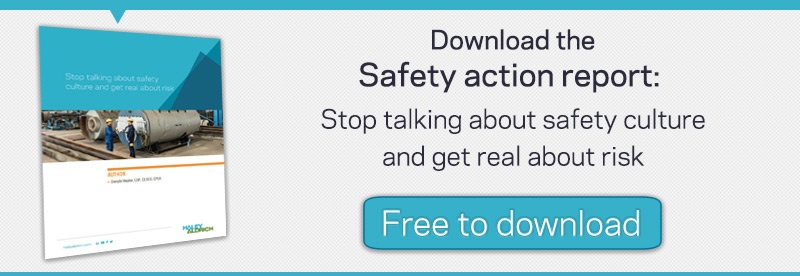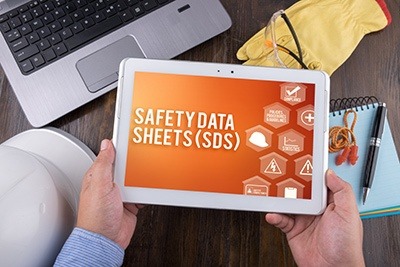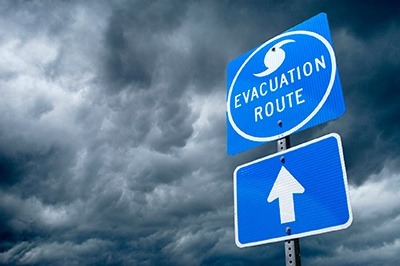Across industries and around the globe, new areas of risk seem to emerge daily. From environmental protection to employee well-being, the importance of developing and nurturing a company’s risk competence can’t be overstated or overlooked. The potential price of letting down your guard on safety risks-even unintentionally-is simply too high.
Executives and managers charged with identifying and mitigating risk face the unrelenting challenge of staying on top of new regulations while also ensuring that all levels of employees in multiple locations understand and adhere to their roles in compliance and risk management. What is the difference between how work should be accomplished and how it’s actually being accomplished? Assessing human performance can seem impossible when there is a huge disconnect between management and the workers on the floor.
Safety analytics: rescue or risk?
When companies consider everything from criminal or tort liability, damaged corporate reputations and the potential for life-altering injury or the tragic loss of life, they are becoming increasingly aware that they cannot afford a weak link in the safety chain. However, traditional efforts such as focusing on training communication, completing forms and checklists, and developing procedures-while still essential-have proven not to be successful enough to mitigate risk.
As a result, experts are applying new predictive data modeling techniques to current safety data analytics, with the end goal of turning facts into knowledge-based action. The premise is strong but only as strong as the quality and validity of its data. Obviously, data quality and validity are important and rely on an organization’s risk competence and a culture that values communication and transparency above all else to gather reliable data.
The danger lurking in your data
Everyone wants the information on the spreadsheet to result in good news. However, the very data that may bring a sense of security when making safety decisions could reveal a perilous area of exposure. If data was gathered using human input, and performance and standards were not appropriately measured, that gap could create an inaccurate representation of compliance and produce misaligned confidence. A company’s entire safety culture can be eroded by what may start as one small fib-born in a moment of employee panic or self-protection-that mushrooms into disaster. Even the most proactive and awarded safety culture does not stand a chance if data and records do not include the correct information to monitor and measure. While the lack of data integrity does not always result in disaster, the record clearly points to the potential for havoc. Corporate decision-makers must know the reality of human performance-and decision-making-when it comes to safety and compliance if they want to measure risk effectively. Getting a true picture starts with creating an environment where everyone is unquestionably on the same page.

Examples of the dangers in data
One of the most powerful examples of dangerous data surrounds the 2010 Drilling Rig Explosion at the Macondo Well’s Deepwater Horizon Rig.
In the years leading up to the 2010 explosion, the risk management policies of both BP and the deepwater drilling contractor Transocean promoted an “incident-free workplace.” The third volume of the U.S. Chemical Safety and Hazard Investigation Board’s (CSB) investigation found that, as of 2008, BP’s corporate safety operating management system (OMS) touted that their goal was, “no accidents, no harm to people, no damage to the environment.” Their safety goals were similar to their peers’ safety goals, including ExxonMobil, ShellGlobal and Chevron.
CSB’s post-incident analyses revealed that the safety policies actually satisfied safety and environment management system (SEMS) requirements. However, additional research exposed a gap between information reporting and risk reduction. Research showed that even five years after the tragedy, the companies still did not effectively implement safety policies in a way that would encourage reporting potential dangers to manage major accident event (MAE) risk. The CSB’s report advised, “Preventing incidents requires a shift in focus from past successes to current risk reduction activities. Ultimately, risk reduction efforts must be continually accounting for inevitably changing circumstances (e.g., the drilling environment, technology, knowledge, and workforce).”
Uncovering the truth in your safety culture

Safety leadership belongs to everyone in an organization. From the top of the company to the floor front lines, truth in work actions stands its best chance when each employee knows and shares the same belief and commitment to risk competence. Only then can a company begin to trust that the assessed safety data is real, and truly measure risk.
While details and implementation vary among organizations, there are basic steps any organization can take to close the gap between safety culture perception and risk reality.
- Honesty is the best policy. Creating a culture where truth is role-modeled, encouraged, protected from retaliation and rewarded helps to eliminate factors that lead to cover-ups and falsification.
- Make it personal. Communicate clearly and consistently that safety is valued over productivity. Self-enforcement of compliance through individual inspiration can change the DNA of a company’s safety culture.
- Develop employee trust in safety policies by being real about risks and ready to answer difficult questions.
- Implement external auditing for an unbiased and authentic look at your true risk tolerance.
The easiest-and also most dangerous-approach in any safety culture is to tell people what they’re supposed to do, and then assume they will do it. Unfortunately, it often takes experiencing the damaging, even horrific, results firsthand, rather than learning from other companies’ safety mishaps before an organization is willing to take an honest look at whether their own risk competence is built on a foundation of truth. Get ahead of risk in your organization before exposure happens.
Learn more about how to identify, assess and prioritize risk. Download the Safety action report: Stop talking about safety culture and get real about risk.
Published: 7/19/2017
Author

Technical Expert, Health and Safety




